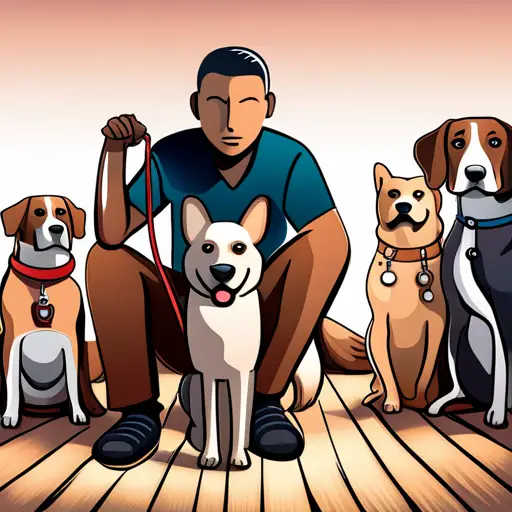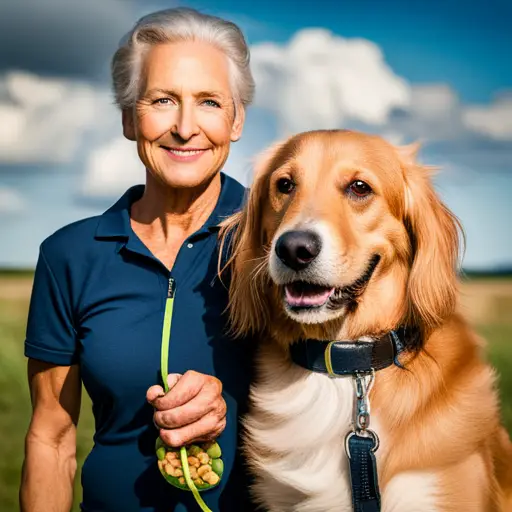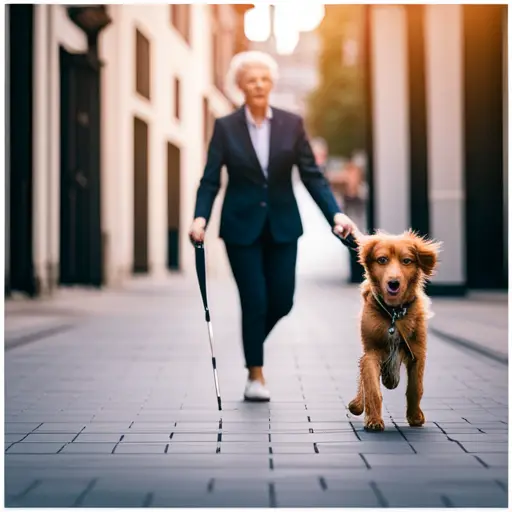Are you tired of being pulled down the street by your excitable pup? Leash training can help you and your furry friend enjoy stress-free walks together. By teaching your dog how to walk calmly on a leash, you’ll be able to explore your neighborhood without the fear of being dragged around or having your arm yanked out of its socket.
Choosing the right leash and collar is the first step in successful leash training. A well-fitted collar and sturdy leash will ensure your dog’s safety and give you better control during walks.
With patience and consistency, you can teach your dog to walk calmly by your side, making your daily outings a relaxing and enjoyable experience for you and your furry friend.
Key Takeaways
- Choosing the right leash and collar is crucial for successful leash training.
- Positive reinforcement techniques like treats and praise are effective in training.
- Prevent leash pulling by stopping and redirecting attention with commands like ‘heel.’
- Seek professional help if your dog becomes aggressive on the leash.
Choosing the Right Leash and Collar

You’ll want to choose the right leash and collar for your pup so that you can walk them comfortably and confidently.
When it comes to leash material options, there are a few to consider. Nylon leashes are durable and come in various lengths and widths, making them a reliable choice for most dogs. Leather leashes are also durable and comfortable but may be more expensive. Retractable leashes can give your dog more freedom to roam, but they can be dangerous if not used properly and make it harder to control your pup.
Another important consideration when choosing a collar is sizing. You want to ensure the collar is snug enough to prevent your dog from slipping out but not too tight that it causes discomfort or restricts breathing. Collars come in different sizes and widths, so measure your dog’s neck before purchasing.
Now that you have the right tools let’s begin leash training by gradually introducing your pup to the leash and making it a positive experience.
Getting Started with Leash Training

Starting out may seem overwhelming, but don’t worry – with patience and persistence, you’ll be amazed at how quickly your furry friend catches on to leash training.
The first step is to introduce your dog to the leash and collar. Let them sniff and investigate the equipment so they feel comfortable and familiar with it. Once they’re used to having the collar and leash on, you can start practicing basic leash commands such as ‘come’ and ‘stay’ in a quiet environment with minimal distractions. Use positive reinforcement techniques such as treats and praise to encourage good behavior and make the experience enjoyable for your dog.
As your dog becomes more comfortable with the basic leash commands, gradually increase distractions in your training sessions. Take your furry friend to a quiet park or a street with light foot traffic, and practice walking on the leash. If they become distracted or pull on the leash, stop and wait for them to calm down before continuing.
Always use positive reinforcement techniques and avoid punishing your dog for unwanted behavior. With consistency and patience, you’ll soon have a well-behaved dog that walks calmly on the leash.
The next section’ll cover more advanced techniques for teaching your dog to walk calmly on a leash.
Teaching Your Dog to Walk Calmly on a Leash

Once your furry friend has mastered the basics of leash training, it’s time to teach them how to walk calmly on a leash. One of the best ways to do this is through positive reinforcement. Whenever your dog walks calmly beside you, reward them with praise and treats. This will help them associate good behavior with positive outcomes and encourage them to continue walking nicely on the leash.
It’s also important to prevent leash pulling before it starts. When your dog starts to pull ahead, stop walking and wait for them to return to your side. Once they do, reward them with praise and a treat. This will teach them that pulling on the leash is not rewarded, and they will eventually learn to walk calmly beside you without pulling.
With consistent positive reinforcement and leash-pulling prevention, your dog will become a pro at walking calmly on a leash in no time.
As you continue with leash training, you may encounter some common challenges. Stay tuned for solutions to these challenges in the next section.
Common Challenges and Solutions

When teaching your furry companion to walk calmly on a leash, there may be some bumps in the road, but with perseverance and patience, you can overcome them and enjoy peaceful walks with your four-legged friend. Here are some common challenges you may face and solutions to help you overcome them:
- Pulling: If your dog pulls on the leash, stop walking and wait for them to return to your side. When they do, reward them with a treat and continue walking. Repeat this process until they learn to walk calmly by your side.
- Distractions: Dogs can easily get distracted by their surroundings, so it’s important to teach them commands like ‘heel’ or ‘focus’ to redirect their attention back to you. Practice these commands in a quiet environment before gradually introducing distractions.
- Leash aggression: If your dog becomes aggressive towards other dogs or people while on the leash, seek the help of a professional trainer. They can help you address the underlying causes of the aggression and teach you how to manage it.
- Fear of the leash: Some dogs may be fearful of the leash, so it’s important to introduce it slowly and positively. Use treats and praise to create positive associations with the leash, gradually increasing your dog’s time wearing it.
- Lack of exercise: Dogs that don’t get enough exercise may have excess energy, leading to pulling and other behavior issues on walks. Ensure your dog gets enough exercise and mental stimulation throughout the day.
You can teach your dog to walk calmly on a leash by addressing these common challenges and using positive reinforcement techniques.
The next section discusses how to enjoy stress-free walks with your well-trained dog.
Enjoying Stress-Free Walks with Your Well-Trained Dog

Now that you’ve successfully trained your furry companion to walk calmly, take pleasure in stress-free strolls with your well-behaved pup. You can enjoy your walks without stress or frustration with positive reinforcement, incorporating exercise, building trust, and establishing a routine.
Positive reinforcement is key to maintaining your dog’s good behavior. Reward them with treats or praise when they walk calmly beside you.
Incorporating exercise is also important to keep your dog engaged and stimulated during walks. Allow your dog to explore and sniff around, and don’t forget to bring along toys or playtime activities.
Building trust and establishing a routine will help your dog feel more secure and confident during walks. You and your furry friend can enjoy many stress-free walks with patience and consistency.
Conclusion
Congratulations! You now have all the tools you need to leash train your dog and enjoy stress-free walks together successfully.
Choosing the right leash and collar is key to ensuring your dog’s comfort and safety. And getting started with leash training requires patience and consistency.
As you continue to teach your dog to walk calmly on a leash, expect some common challenges to arise. But don’t worry. With our solutions, you can overcome them and enjoy peaceful walks with your furry friend.
So what are you waiting for? Put on your walking shoes, grab your leash, and train your dog to walk easily. The adventure awaits!
